Junwei Ji
DOA Estimation with Lightweight Network on LLM-Aided Simulated Acoustic Scenes
Nov 11, 2025Abstract:Direction-of-Arrival (DOA) estimation is critical in spatial audio and acoustic signal processing, with wide-ranging applications in real-world. Most existing DOA models are trained on synthetic data by convolving clean speech with room impulse responses (RIRs), which limits their generalizability due to constrained acoustic diversity. In this paper, we revisit DOA estimation using a recently introduced dataset constructed with the assistance of large language models (LLMs), which provides more realistic and diverse spatial audio scenes. We benchmark several representative neural-based DOA methods on this dataset and propose LightDOA, a lightweight DOA estimation model based on depthwise separable convolutions, specifically designed for mutil-channel input in varying environments. Experimental results show that LightDOA achieves satisfactory accuracy and robustness across various acoustic scenes while maintaining low computational complexity. This study not only highlights the potential of spatial audio synthesized with the assistance of LLMs in advancing robust and efficient DOA estimation research, but also highlights LightDOA as efficient solution for resource-constrained applications.
Self-Boosted Weight-Constrained FxLMS: A Robustness Distributed Active Noise Control Algorithm Without Internode Communication
Jul 16, 2025Abstract:Compared to the conventional centralized multichannel active noise control (MCANC) algorithm, which requires substantial computational resources, decentralized approaches exhibit higher computational efficiency but typically result in inferior noise reduction performance. To enhance performance, distributed ANC methods have been introduced, enabling information exchange among ANC nodes; however, the resulting communication latency often compromises system stability. To overcome these limitations, we propose a self-boosted weight-constrained filtered-reference least mean square (SB-WCFxLMS) algorithm for the distributed MCANC system without internode communication. The WCFxLMS algorithm is specifically designed to mitigate divergence issues caused by the internode cross-talk effect. The self-boosted strategy lets each ANC node independently adapt its constraint parameters based on its local noise reduction performance, thus ensuring effective noise cancellation without the need for inter-node communication. With the assistance of this mechanism, this approach significantly reduces both computational complexity and communication overhead. Numerical simulations employing real acoustic paths and compressor noise validate the effectiveness and robustness of the proposed system. The results demonstrate that our proposed method achieves satisfactory noise cancellation performance with minimal resource requirements.
Preventing output saturation in active noise control: An output-constrained Kalman filter approach
Dec 25, 2024Abstract:The Kalman filter (KF)-based active noise control (ANC) system demonstrates superior tracking and faster convergence compared to the least mean square (LMS) method, particularly in dynamic noise cancellation scenarios. However, in environments with extremely high noise levels, the power of the control signal can exceed the system's rated output power due to hardware limitations, leading to output saturation and subsequent non-linearity. To mitigate this issue, a modified KF with an output constraint is proposed. In this approach, the disturbance treated as an measurement is re-scaled by a constraint factor, which is determined by the system's rated power, the secondary path gain, and the disturbance power. As a result, the output power of the system, i.e. the control signal, is indirectly constrained within the maximum output of the system, ensuring stability. Simulation results indicate that the proposed algorithm not only achieves rapid suppression of dynamic noise but also effectively prevents non-linearity due to output saturation, highlighting its practical significance.
Transferable Selective Virtual Sensing Active Noise Control Technique Based on Metric Learning
Sep 09, 2024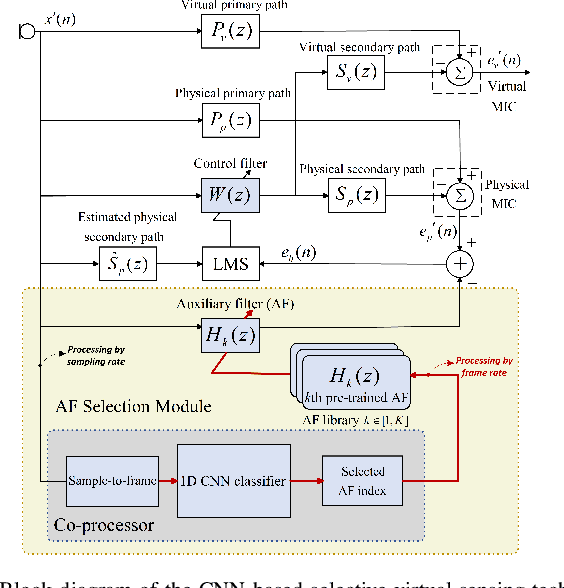
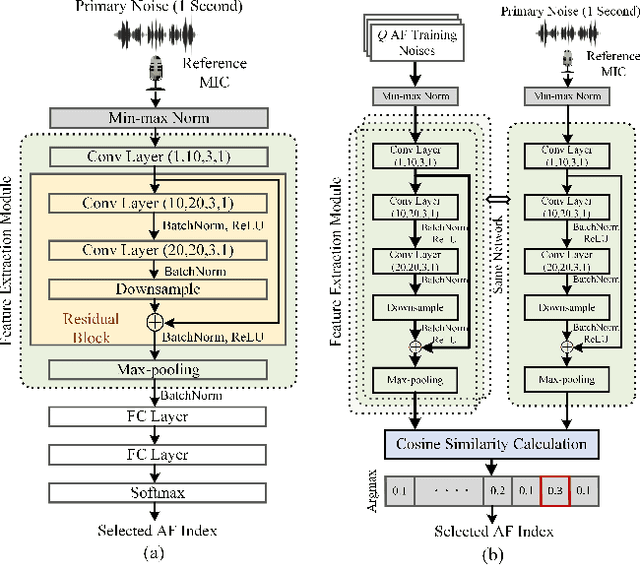
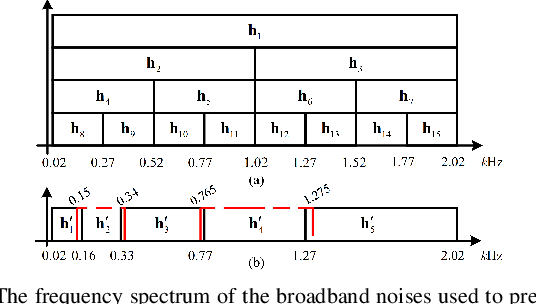
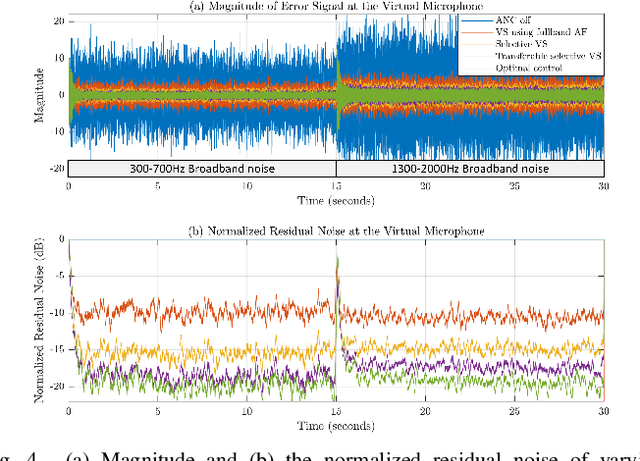
Abstract:Virtual sensing (VS) technology enables active noise control (ANC) systems to attenuate noise at virtual locations distant from the physical error microphones. Appropriate auxiliary filters (AF) can significantly enhance the effectiveness of VS approaches. The selection of appropriate AF for various types of noise can be automatically achieved using convolutional neural networks (CNNs). However, training the CNN model for different ANC systems is often labour-intensive and time-consuming. To tackle this problem, we propose a novel method, Transferable Selective VS, by integrating metric-learning technology into CNN-based VS approaches. The Transferable Selective VS method allows a pre-trained CNN to be applied directly to new ANC systems without requiring retraining, and it can handle unseen noise types. Numerical simulations demonstrate the effectiveness of the proposed method in attenuating sudden-varying broadband noises and real-world noises.
Computation-efficient Virtual Sensing Approach with Multichannel Adjoint Least Mean Square Algorithm
May 23, 2024Abstract:Multichannel active noise control (ANC) systems are designed to create a large zone of quietness (ZoQ) around the error microphones, however, the placement of these microphones often presents challenges due to physical limitations. Virtual sensing technique that effectively suppresses the noise far from the physical error microphones is one of the most promising solutions. Nevertheless, the conventional multichannel virtual sensing ANC (MVANC) system based on the multichannel filtered reference least mean square (MCFxLMS) algorithm often suffers from high computational complexity. This paper proposes a feedforward MVANC system that incorporates the multichannel adjoint least mean square (MCALMS) algorithm to overcome these limitations effectively. Computational analysis demonstrates the improvement of computational efficiency and numerical simulations exhibit comparable noise reduction performance at virtual locations compared to the conventional MCFxLMS algorithm. Additionally, the effects of varied tuning noises on system performance are also investigated, providing insightful findings on optimizing MVANC systems.
A Survey of Integrating Wireless Technology into Active Noise Control
May 21, 2024



Abstract:Active Noise Control (ANC) is a widely adopted technology for reducing environmental noise across various scenarios. This paper focuses on enhancing noise reduction performance, particularly through the refinement of signal quality fed into ANC systems. We discuss the main wireless technique integrated into the ANC system, equipped with some innovative algorithms, in diverse environments. Instead of using microphone arrays, which increase the computation complexity of the ANC system, to isolate multiple noise sources to improve noise reduction performance, the application of the wireless technique avoids extra computation demand. Wireless transmissions of reference, error, and control signals are also applied to improve the convergence performance of the ANC system. Furthermore, this paper lists some wireless ANC applications, such as earbuds, headphones, windows, and headrests, underscoring their adaptability and efficiency in various settings.
A Computation-efficient Online Secondary Path Modeling Technique for Modified FXLMS Algorithm
Jun 20, 2023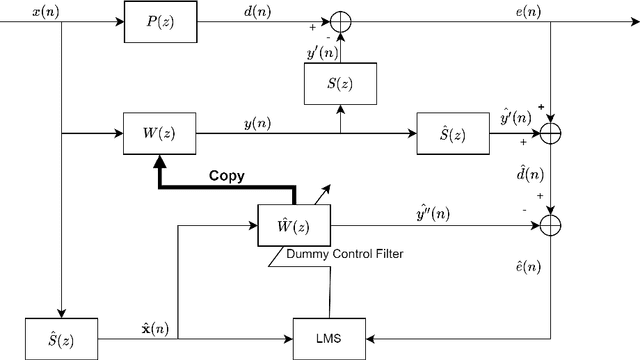
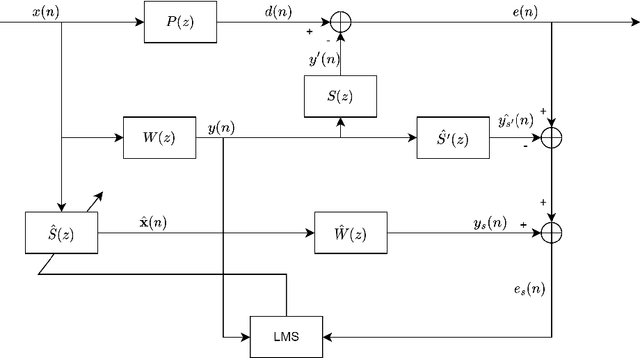

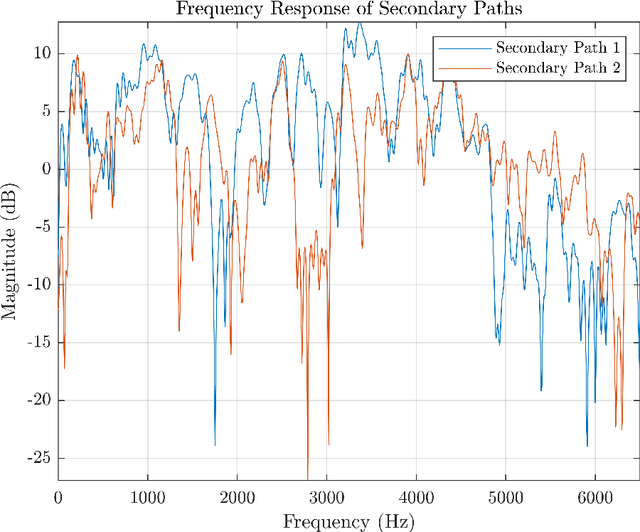
Abstract:This paper proposes an online secondary path modelling (SPM) technique to improve the performance of the modified filtered reference Least Mean Square (FXLMS) algorithm. It can effectively respond to a time-varying secondary path, which refers to the path from a secondary source to an error sensor. Unlike traditional methods, the proposed approach switches modes between adaptive ANC and online SPM, eliminating the use of destabilizing components such as auxiliary white noise or additional filters, which can negatively impact the complexity, stability, and noise reduction performance of the ANC system. The system operates in adaptive ANC mode until divergence is detected due to secondary path changes. At this moment, it switches to SPM mode until the path is remodeled and then returns to ANC mode. Furthermore, numerical simulations in the paper demonstrate that the proposed online technique effectively copes with the secondary path variations.
A practical distributed active noise control algorithm overcoming communication restrictions
Mar 15, 2023Abstract:By assigning the massive computing tasks of the traditional multichannel active noise control (MCANC) system to several distributed control nodes, distributed multichannel active noise control (DMCANC) techniques have become effective global noise reduction solutions with low computational costs. However, existing DMCANC algorithms simply complete the distribution of traditional centralized algorithms by combining neighbour nodes' information but rarely consider the degraded control performance and system stability of distributed units caused by delays and interruptions in communication. Hence, this paper develops a novel DMCANC algorithm that utilizes the compensation filters and neighbour nodes' information to counterbalance the cross-talk effect between channels while maintaining independent weight updating. Since the neighbours' information required barely affects the local control filter updating in each node, this approach can tolerate communication delay and interruption to some extent. Numerical simulations demonstrate that the proposed algorithm can achieve satisfactory noise reduction performance and high robustness to real-world communication challenges.
A Momentum Two-gradient Direction Algorithm with Variable Step Size Applied to Solve Practical Output Constraint Issue for Active Noise Control
Mar 15, 2023Abstract:Active noise control (ANC) has been widely utilized to reduce unwanted environmental noise. The primary objective of ANC is to generate an anti-noise with the same amplitude but the opposite phase of the primary noise using the secondary source. However, the effectiveness of the ANC application is impacted by the speaker's output saturation. This paper proposes a two-gradient direction ANC algorithm with a momentum factor to solve the saturation with faster convergence. In order to make it implemented in real-time, a computation-effective variable step size approach is applied to further reduce the steady-state error brought on by the changing gradient directions. The time constant and step size bound for the momentum two-gradient direction algorithm is analyzed. Simulation results show that the proposed algorithm performs effectively in the time-unvaried and time-varied environment.
Deep Generative Fixed-filter Active Noise Control
Mar 10, 2023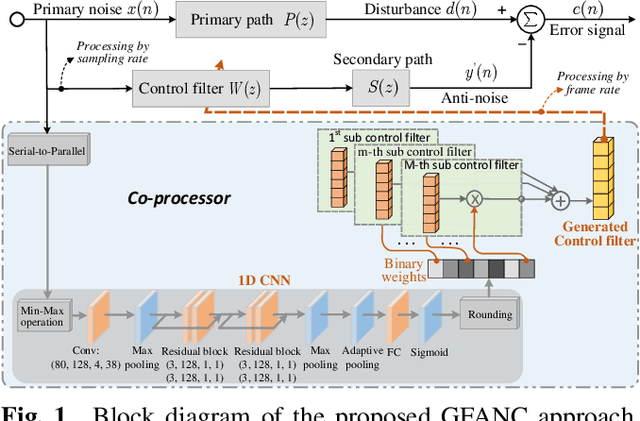
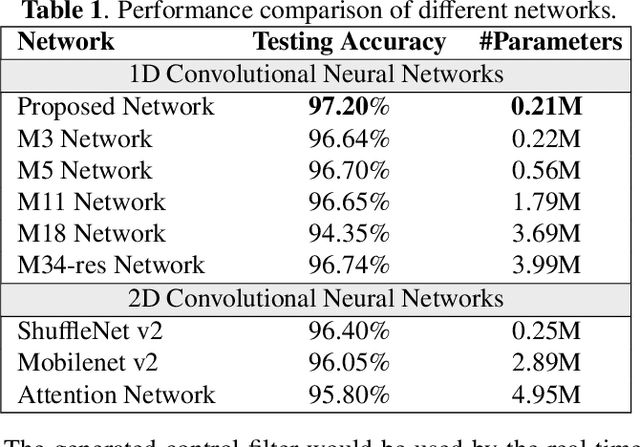
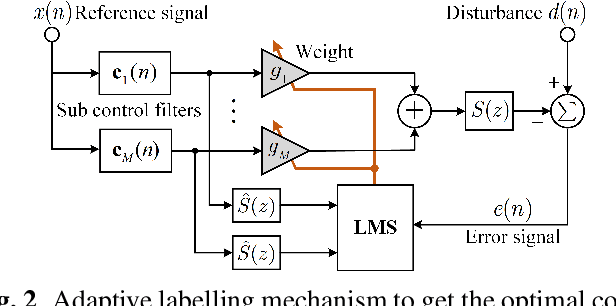
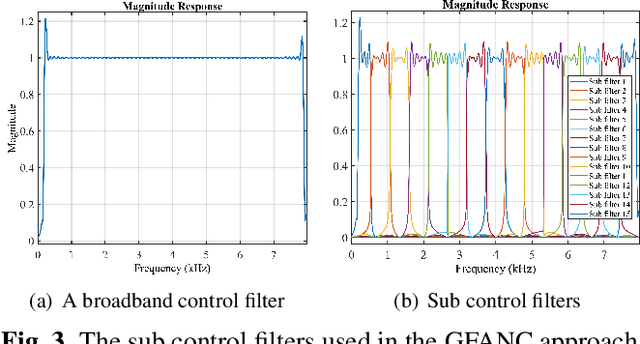
Abstract:Due to the slow convergence and poor tracking ability, conventional LMS-based adaptive algorithms are less capable of handling dynamic noises. Selective fixed-filter active noise control (SFANC) can significantly reduce response time by selecting appropriate pre-trained control filters for different noises. Nonetheless, the limited number of pre-trained control filters may affect noise reduction performance, especially when the incoming noise differs much from the initial noises during pre-training. Therefore, a generative fixed-filter active noise control (GFANC) method is proposed in this paper to overcome the limitation. Based on deep learning and a perfect-reconstruction filter bank, the GFANC method only requires a few prior data (one pre-trained broadband control filter) to automatically generate suitable control filters for various noises. The efficacy of the GFANC method is demonstrated by numerical simulations on real-recorded noises.
 Add to Chrome
Add to Chrome Add to Firefox
Add to Firefox Add to Edge
Add to Edge